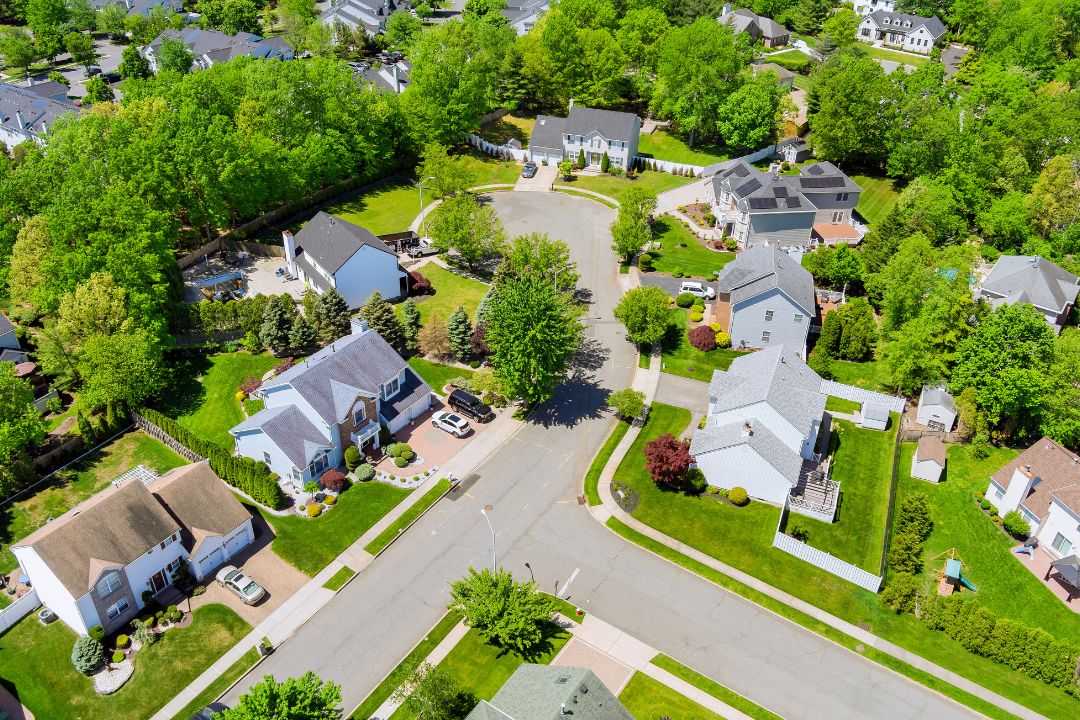When planning for retirement or considering a move to a more manageable home, many older adults come across two types of communities: age-restricted and 55+ communities. While these terms are often used interchangeably, they represent distinct housing types with different benefits, rules, and lifestyles.
Understanding the difference between these two can help retirees, empty nesters, and older homebuyers make a more informed decision that aligns with their goals and preferences.
What Is an Age-Restricted Community?
An age-restricted community is a residential development where residency is limited based on the age of the occupants. These communities are governed by the Housing for Older Persons Act (HOPA), which allows exemptions to federal anti-discrimination laws as long as they meet specific criteria.
Key Characteristics:
- Age limits: Typically, at least one resident in 80% of the occupied units must be aged 55 or older. Some communities are restricted to those aged 62 and older.
- Child restrictions: These communities generally do not allow minors (usually under the age of 18) to live in the household full-time, although short visits may be permitted.
- Home types: Can include apartments, condominiums, and single-family homes. Rentals are more common here than in 55+ communities.
- Lifestyle offerings: Amenities vary significantly; some communities may offer few organized activities or shared spaces.
Age-restricted communities appeal to individuals seeking a quieter, more private setting with fewer disruptions from younger families or children.
What Is a 55+ Community?
A 55+ community is a specific type of age-restricted housing designed for active adults aged 55 and older. These communities prioritize social interaction, wellness, and convenience, often featuring amenities tailored to older adults who want to maintain an active lifestyle.
Common Features:
- Minimum age: At least one resident must be 55 or older. Household members under 55 are sometimes permitted, but minors are typically not allowed to live there full-time.
- Active lifestyle: Residents enjoy a range of recreational amenities, including golf courses, swimming pools, fitness centers, walking trails, and clubhouses.
- Low-maintenance living: Most 55+ communities include exterior home maintenance, lawn care, and shared facility upkeep through homeowner association (HOA) fees.
- Social engagement: Scheduled activities, group trips, classes, and community events are a regular part of everyday life, promoting a vibrant and connected lifestyle.
- Homeownership model: Most homes are owner-occupied rather than rented, and options range from attached townhomes to detached ranch-style homes or villas.
55+ communities are ideal for individuals or couples who want to enjoy retirement while staying socially active and physically engaged.
Comparing Age-Restricted and 55+ Communities
Below is a side-by-side comparison of the two housing types:
| Feature | Age-Restricted Communities | 55+ Communities |
|---|---|---|
| Legal Basis | Regulated under HOPA | A subtype of age-restricted under HOPA |
| Minimum Age | Typically 55 or 62+ | 55+ (one resident per household) |
| Children Allowed | Usually not allowed to live full-time | The same rule typically applies |
| Lifestyle Focus | Quiet, age-based living | Active adult lifestyle with amenities |
| Social Events & Activities | May be minimal or informal | Common and often scheduled regularly |
| Amenities | Varies widely | Often extensive and lifestyle-focused |
| Homeownership Options | Mix of rentals and ownership | Primarily owner-occupied |
| Community Size & Design | Smaller or multi-generational hybrids | Larger, master-planned communities |
Which One Is Right for You?
Your choice between an age-restricted or a 55+ community depends mainly on your desired lifestyle, housing preferences, and level of social engagement.
Choose a 55+ community if:
- You want access to structured activities and wellness programs.
- You prefer an active, vibrant retirement lifestyle.
- You enjoy community involvement and social interaction.
- You want amenities like pools, tennis courts, and fitness centers.
Choose an age-restricted community if:
- You seek a quieter environment with fewer community events.
- You want more flexibility in housing types, including rentals.
- You prioritize privacy or minimal obligations to participate in social activities.
Tips for Choosing the Right Community
- Visit Multiple Communities: Take the time to tour several neighborhoods and get a sense of the atmosphere and amenities.
- Ask About HOA Fees: Understand what is included—some cover maintenance, while others may not.
- Check Community Rules: Review age restrictions, guest policies, pet guidelines, and any limitations on who can live with you.
- Evaluate Location: Look for proximity to medical services, grocery stores, public transportation, and other essentials.
- Consider Long-Term Needs: Ensure that the home and community can accommodate future mobility or healthcare requirements.
Certainly! Here is a new paragraph for your blog post, featuring real examples of age-restricted and 55+ communities, with short 50-word descriptions for each. This section will naturally follow the “Tips for Choosing the Right Community” or serve as a sidebar/resource section.
Featured Age-Restricted and 55+ Communities
To help you begin your search, here are some well-regarded communities that cater to age-restricted and 55+ living. Each offers unique amenities, locations, and lifestyle opportunities tailored to active adults and retirees.
Age-Restricted Communities
Evergreens at Columbia Town Center – Columbia, MD
Located in the heart of Columbia, this community offers elegant apartment-style living with easy access to shops, medical centers, and parks. Perfect for those seeking urban conveniences in a tranquil, age-restricted environment.
Cresswind Charleston by Kolter Homes – Summerville, SC
An award-winning community focused on fitness, nutrition, and relationships. Enjoy resort-style amenities, including a pool, clubhouse, pickleball, and walking trails—all in a charming Southern setting near Charleston.
Shoreline Palms – Largo, FL
This Florida gem offers affordable manufactured homes in a 55+ age-restricted setting. Enjoy sunny skies, palm-lined streets, and proximity to beaches, golf, and dining—all in a quiet, low-maintenance community.
Verterra – A Trilogy Boutique Community – Bonney Lake, WA
Set in scenic Washington state, Verterra features luxury homes, green space, and modern amenities. Designed for socially engaged, health-conscious adults aged 55+, it combines elegance with outdoor living.
55+ Communities
Nevina – A Trilogy Boutique Community – Paso Robles, CA
Experience wine country living in this thoughtfully designed community featuring contemporary homes, wellness facilities, and vibrant social spaces—all surrounded by rolling hills and vineyards in Central California.
Oak Hill Reserve by Kolter Homes – Newnan, GA
This master-planned 55+ neighborhood offers serene suburban living near Atlanta. Residents enjoy energy-efficient homes, outdoor recreation, and a strong sense of community in a peaceful wooded environment.
Del Webb at Alegria – Bernalillo, NM
Southwestern charm meets modern living in this gated 55+ Del Webb community. Features include a fitness center, pool, walking trails, and stunning views of the Sandia Mountains.
Fox Hills Condominiums – Rockaway, NJ
This established 55+ community offers low-maintenance condominium living with a clubhouse, fitness center, and beautiful landscaping—all within easy reach of shopping, healthcare, and New York City.
Final Thoughts
Choosing between an age-restricted and a 55+ community is about more than just age—it’s about lifestyle. Whether you prefer an active, amenity-rich environment or a simpler, quieter setting, understanding the differences between these communities will help you make the right decision for your retirement years.
Be sure to work with a real estate agent who specializes in senior housing and take time to compare locations, costs, and long-term value. Retirement is a new chapter—your home should support your health, happiness, and goals for the years ahead.




